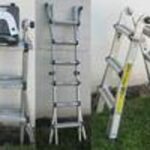It truly doesn’t matter if you’re flipping burgers at McDonald’s or climbing the corporate ladder, destined to become the CEO of the latest and greatest mega corporation; if you don’t have a budget your personal finances suffer and you will forever fail at money management. More and more, I find young people enrolling my budget seminars and online workshops clueless about where to begin when it comes to budgeting. For the sake of keeping things simple, I will outline the process for you, the same way that I do for my students.
Start with a list
All budgets start with a good list. Write down your total take home income at the top, and summarize monthly expenses underneath. Make sure to include easily overlooked expenses like dining out, entertainment, gas and groceries, in addition to monthly bills like rent, utilities and car payments. Pretend, for a moment, that you’re Santa Clause. Make a list and check it twice.
Choose a system
I like spreadsheets; I find them extremely customizable and easy to use. In fact, when drafting a budget using Microsoft Excel, the Microsoft web site offers thousands of different budget templates with items already listed and formulas pre-programed that accomplish the all of the icky math stuff calculations for you. However, don’t feel pressured to use Excel exclusively; there are many other exceptional programs available if spreadsheets aren’t “your thing”.
As a spreadsheet alternative, I would recommend Mint.com. This handy online tool syncs up to your bank account, evaluates your spending and gives you a snapshot of your budget. Mint.com automatically allocates funds into different areas based on your spending habits, allowing you to cut back and modify with a few clicks of a mouse.
Create a line item for savings
One mistake that many young people make is not saving at all, and even if they are saving, they are likely not saving enough. A complete budget includes a line item for savings and investments, allocating the expert prescribed 10 to 15 percent of gross income'”before tax- if not more that goes from paycheck to savings account. Always pay yourself first by putting your line item for savings at the top of your budget. Once you pay yourself, then pay your bills.
Evaluate
Now that you have a list, a mechanism and a line item for savings; it’s time to evaluate what expenses you can cut back and adjust within your budget. For instance, cut out that high priced cell phone plan and consider a prepaid plan or cut back from 1,000 cable channels to basic cable. Wherever you find your excess, adjust accordingly.
Set goals
It’s not good to have high bank balances without goals. Write your goals in your budget and keep a running tab of how close you were to meeting those goals. For instance, if your goal is to have an emergency fund of $1,000 put that goal in your budget. I use a web site called Smarty Pig, which works like a savings account and tracks my savings goals for me, but I also list the goal on my budget; it helps to keep me on the straight and narrow. Play with this concept and find what works best for you.
Revisit regularly
Your budget needs to be something you visit with consistently. It doesn’t have to be a consistently as you might review your Facebook or Twitter pages, of course, but your budget needs to be reviewed and adjusted at least every payday and every time you pay your bills.
A couple of tips about budgeting
Separate money for leisure or dining out expenses in cash. Keep the funds on hand or in an envelope, and when that money is gone, don’t replace it until your next pay cycle.
For variable expenses like utilities or cell phone bills, budget for the highest amount you have ever paid. This way, if the bill comes in for less, you have more money to allocate directly toward savings and investments. Subtract the difference between the forecast and the actual amount and redirect that difference into savings.
Pay attention to what you are spending at the grocery store. Grocery prices ebb and flows throughout the year, especially when it comes to produce. Treat groceries like your variable expenses, it is always best to over budgets than under budgets if you want to stay on budget.
More from this Contributor:
3 Essentials to Creative Saving: Building Your Bank Without Breaking Your Budget
Bad at Budgeting? Learn Where Cut Backs Need to Occur
Creating Your Mad Money Budget




